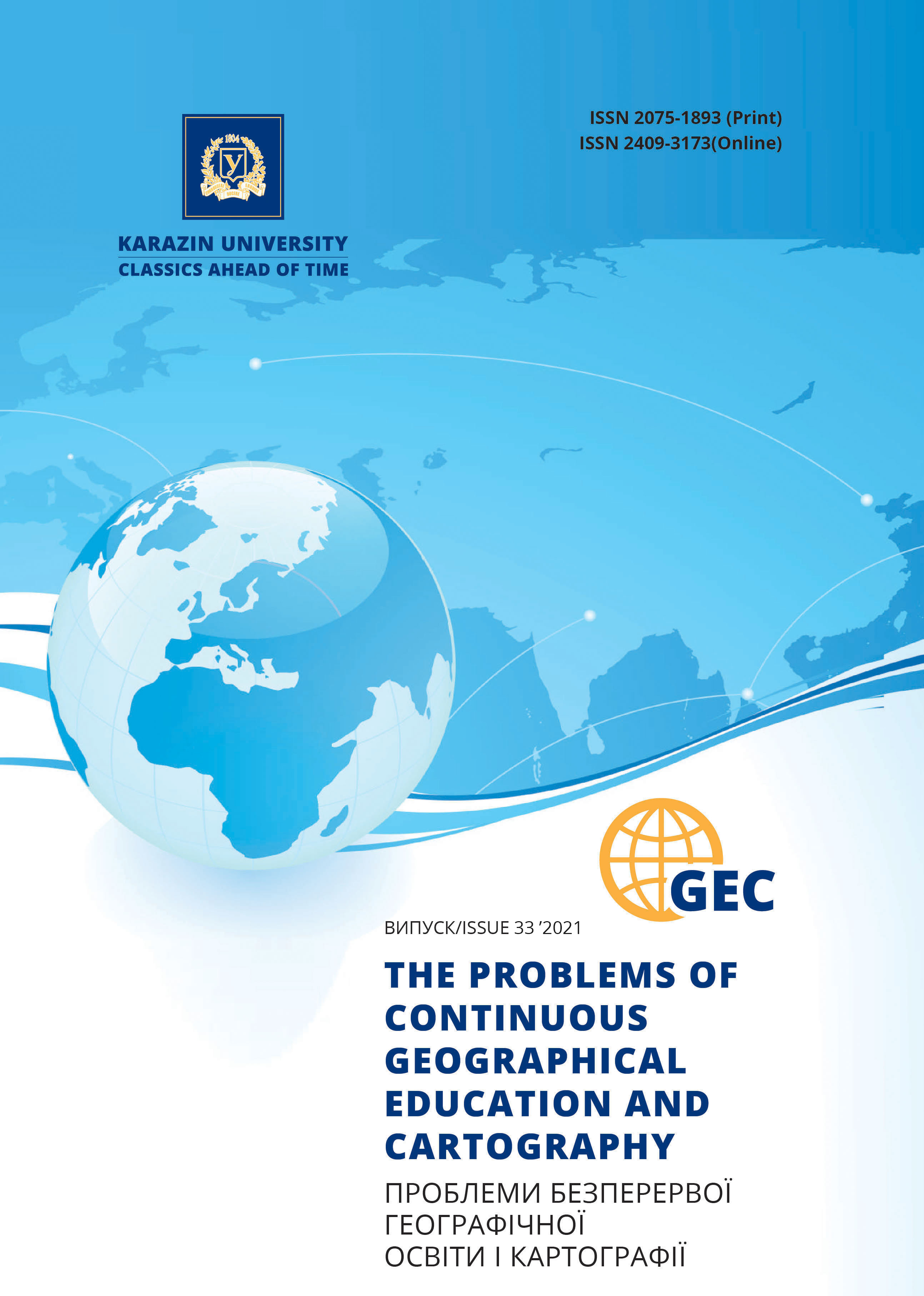Land use optimization of territorial community’s land fund as an element of land resources management to achieve an ecological balance of agricultural landscapes in the region
Abstract
The purpose of this article is to highlight the possibilities and prospects for land use optimization of the territorial community’s land fund (using Malodanylivka TC of Kharkiv region as an example) for the management of available land resources.
Main material. The author considers the essence and approaches to land use optimization of the territorial community’s (TC) land fund. Based on the coefficients of anthropogenic load and environmental sustainability as basic qualitative indicators pointing to the sustainability and ecological balance of agricultural landscapes, the extent of their change by human activity, the author assessed how rational the structure of the territorial community’s land fund is and proposed measures for land use optimization. As we know, optimization of land use is a necessary component of land management at the regional level that leads to achieving the ecological balance of the agricultural landscapes in the region. The land fund of the newly formed territorial communities is a result of the land integration of the former rural (settlement, city) councils that became a part of the community, and, of course, it needs to be optimized. The prerequisite for this is the identification of the best possible options of the land types ratio within the TC for using them in an environmentally friendly way by calculating the coefficients of anthropogenic load, environmental sustainability and the coefficient of arable land. The first coefficient makes it possible to estimate the level of human pressure on the lands - high, moderate, low. The second coefficient calculates the impact of the existing land structure on the environmental sustainability of the territory, which depends on the level of agricultural developments, arable land and intensity of land use. The third coefficient identifies the percentage of arable lands on the territory. Using these coefficients, we can draw a conclusion about the ecological balance of agricultural landscapes within a territorial community and substantiate a set of works to optimize land use in order to form an ecologically sustainable agricultural landscape - an agricultural landscape containing the optimal ratio of various land’s types, characterized by the existing kind of their use. The land fund of Malodanylivka TC of Kharkiv region is typical for forest-steppe’s TC: agricultural land occupies the most part (57%), 35% of the territory is covered by forest land, 4% of the territory is residential and public buildings, the water fund - 2%, other categories lands - 1% each. As a result of calculating the coefficients of ecological stability and anthropogenic load, it has been found that the existing land structure corresponds to an average stable territory with a moderate level of anthropogenic load. However, the result of calculating the coefficient of arable land indicates a critical level of plowing in the community’s territory. So, with the existing land structure in the territory of Malodanylivka TC, the formation of environmentally sustainable agricultural landscapes with biological diversity’s conservation becomes more difficult. Accordingly, the primary task of land use optimization is to reduce the amount of arable land and increase meadow vegetation, because only natural and semi-natural geosystems provide stabilization and self-cleaning of agricultural landscapes, preservation and restoration of soil fertility, provide people with additional resources, including recreational.
Conclusions and further research. Among the existing approaches to optimization and effective land use at the regional level, the approach of S. Osipchuk, O. Dorosh and A. Tretyak is a practical one as it relies on the existing indicators for which land is recorded in Ukraine. It is based on the improvement of environmental and economic criteria and methodological approaches to the targeted land use and determination on their basis of an optimized structure of land. Calculation of the coefficients of anthropogenic load, environmental sustainability and the coefficient of arable land allows us to determine whether the existing land structure TC meets the requirements of rational land use and maintains the ecological balance of agricultural landscapes in the region. So, the values of the indicated coefficients, calculated for the territory of Malodanylivka TC of Kharkiv region, show that agricultural land is subject to priority optimization due to the significant coefficient of arable land. Determination of the optimal ratio of different land types in land structure of any territorial community will solve the issue of systematizing its land fund, formed by integration of the former village (settlement) council’s territories, contributing to the formation of environmentally sustainable agricultural landscapes and preserving the biological diversity of the region. The prospective direction is to make a valid agricultural landscape zoning of the territorial community, including mapping of various aspects of agricultural landscapes, applying the obtained results to optimize the agricultural landscapes of the region.
Downloads
References
Peltonen-Sainio, P., Jauhiainen, L., Laurila, H., Sorvali, J., Honkavaara, E., Wittke, S., Karjalainen, M., Puttonen, E. (2019). Land use optimization tool for sustainable intensification of high-latitude agricultural systems. Land Use Policy, 88. Available at: https://doi.org/10.1016/j.landusepol.2019.104104
Kai Cao, Bo Huang (2019). Spatial optimization for land use planning: Opportunities and challenges. Transactions in GIS, 23, (4), 641-644.
Kury`l`civ, R.M. (2007). Mexanizm formuvannya racional`nogo vy`kory`stannya ta oxorony` zemel` na regional`nomu rivni: Monografiya [The mechanism of formation rational land use and land protection at the regional level: Monograph]. L`viv: Kamenyar, 155.
Tretyak, A.M. (2003). Naukovi osnovy` ekonomiky` ta zemlevporyadkuvannya: Monografiya [Scientific bases of economy and land management: Monograph]. Ky`yiv: CzZRU, 337 .
Ry`bors`ki, I., Goike, E. (1988). Vply`v skladu ugid` na ekologichnu stabil`nist` tery`toriyi. Zemlevporyadni roboty` v special`ny`x umovax [The impact of land structure on the ecological stability of the territory. In: Land management works in special conditions]. Tatrans`ka Lomnicza, 19-26 (Slovak language).
Odum, Ju. (1986). Jekologija: Trudy: v 2 t. [Ecology: Proceedings: in 2 vol.]. Moskva: Mir, v.1, 326; v.2, 376.
Rejmers, N.F. (1994). Jekologija: teorii, zakony, pravila, principy i gipotezy [Ecology: theories, laws, rules, principles and hypotheses]. Moskva: Rossija Molodaja, 367.





